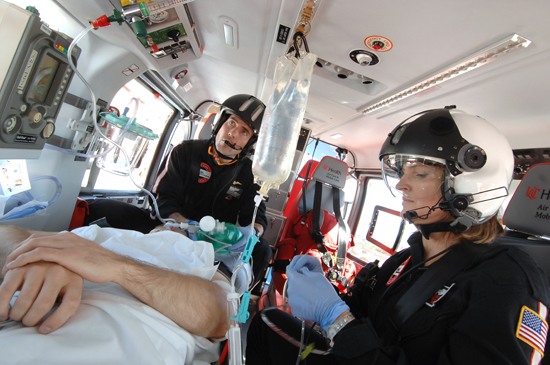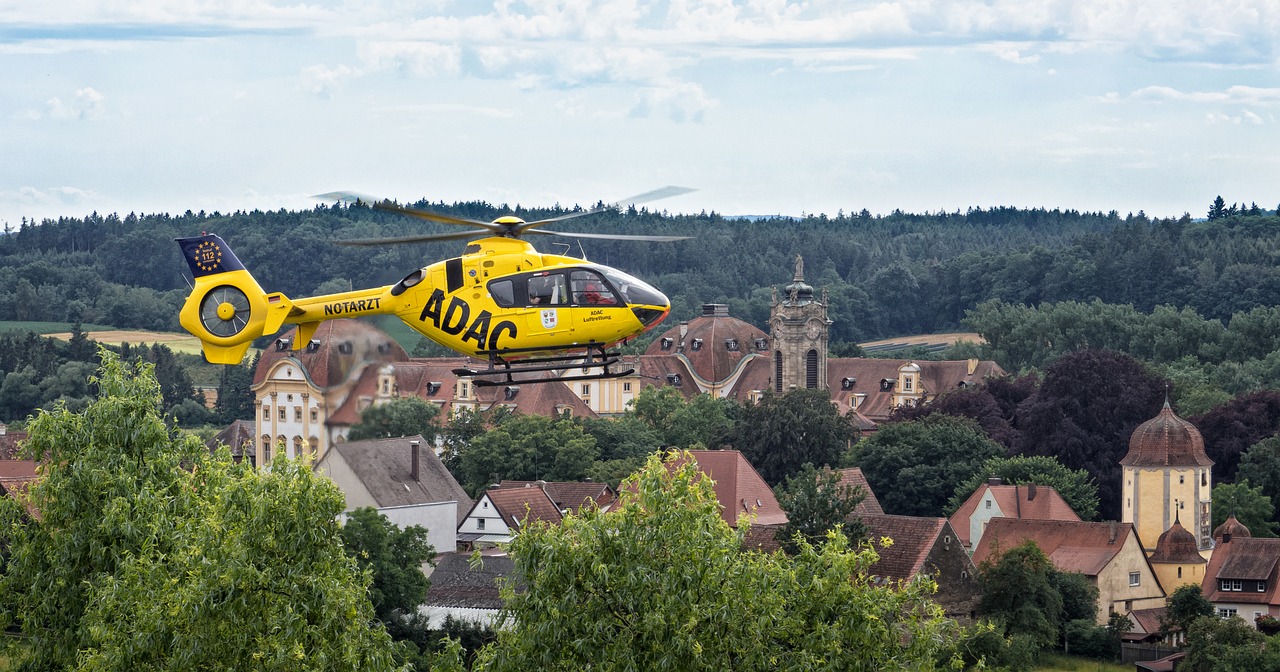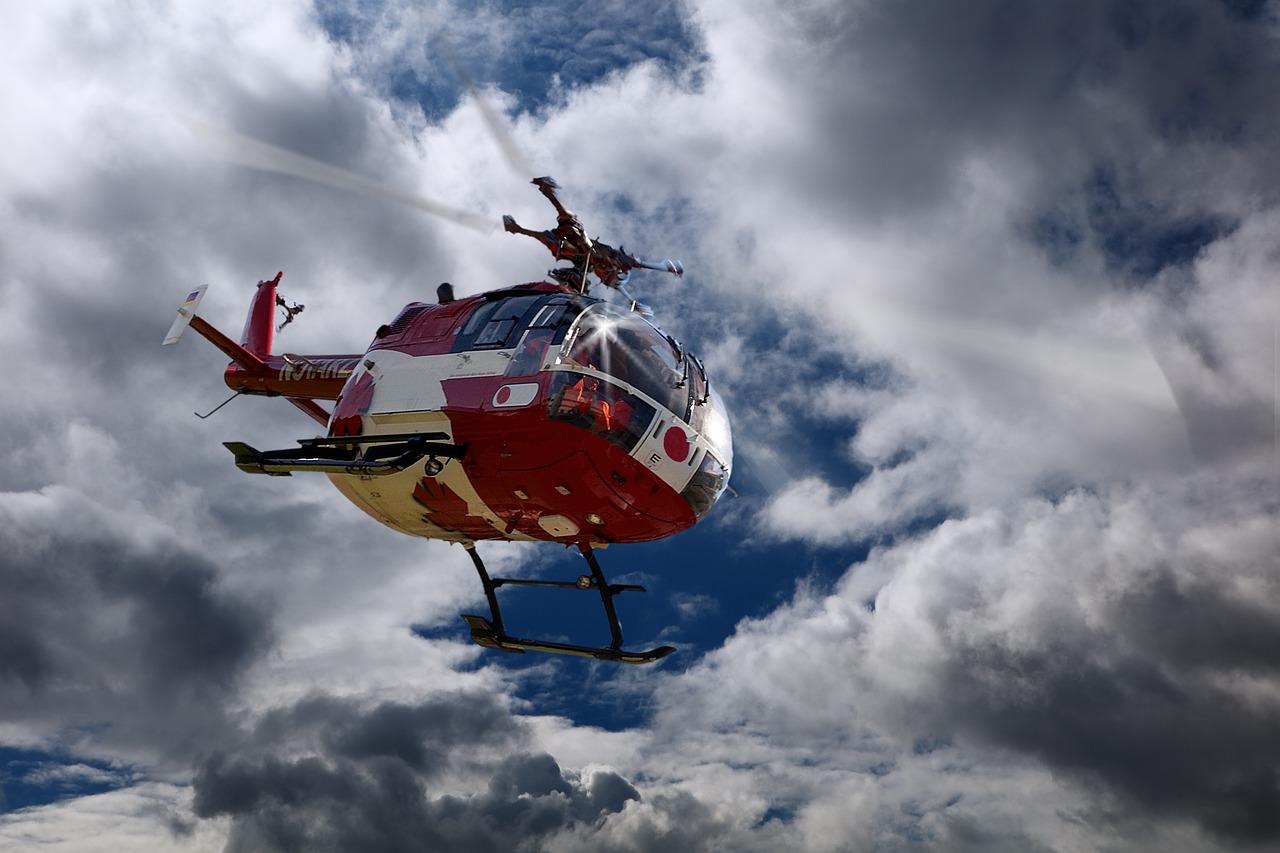Hey there! Looking for some valuable information about air ambulance safety? Well, you’ve come to the right place! In this article, we’ll be talking about everything you need to know as a passenger when it comes to staying safe on an air ambulance. Whether you’re traveling for medical reasons or accompanying a loved one, understanding the safety measures and protocols in place is crucial. So buckle up and get ready to explore the ins and outs of air ambulance safety!

1. What is an Air Ambulance?
1.1 Definition
An air ambulance is a specially equipped aircraft that is used to transport patients who require medical attention and cannot be transported by traditional means. These aircraft are designed to provide a safe and efficient means of transportation for critically ill or injured individuals.
1.2 Types of Air Ambulances
There are different types of air ambulances available, depending on the specific needs of the patient. Helicopters are commonly used for short-distance transport, especially in urban areas where landing space may be limited. Fixed-wing aircraft, such as airplanes or jets, are used for longer distances and international transfers. These aircraft are equipped with advanced medical equipment that is necessary to stabilize and care for patients during transit.
1.3 Purpose of Air Ambulances
The main purpose of air ambulances is to provide rapid medical transportation for patients in critical condition. Time is of the essence when it comes to medical emergencies, and air ambulances can quickly bypass traffic, geographical barriers, and other obstacles to provide prompt medical intervention. They are often used in cases where ground transportation would not be feasible or when air transportation would significantly decrease travel time, increasing the chances of a positive outcome for the patient.
2. Importance of Air Ambulance Safety
2.1 Life-Saving Role
Air ambulances play a crucial role in saving lives by providing timely medical transport to patients in need. Whether it’s responding to emergencies, transferring patients between medical facilities, or providing critical care during interfacility transfers, air ambulances help bridge the gap between medical assistance and the patient’s location. The ability to rapidly transport patients to specialized medical centers can greatly increase their chances of survival and recovery.
2.2 Specialized Medical Equipment
One of the key reasons air ambulances are so effective is their ability to carry specialized medical equipment on board. These aircraft are equipped with state-of-the-art medical equipment, including cardiac monitors, ventilators, defibrillators, and specialized medications. This ensures that patients receive the necessary medical care and interventions during transit, regardless of their medical condition.
2.3 Flight Risks
Operating aircraft comes with inherent risks, and air ambulances are no exception. However, air ambulance operators prioritize safety to mitigate these risks and ensure the well-being of both patients and staff. This includes adhering to strict safety protocols, conducting regular aircraft maintenance and inspections, and implementing comprehensive training programs for both flight crew and medical personnel.
2.4 Patient Comfort
In addition to safety, air ambulances are designed with patient comfort in mind. The interior of these aircraft is outfitted to accommodate the medical needs of patients while providing a comfortable environment throughout the journey. This includes specialized seating, adjustable patient beds, and adequate lighting and temperature control. The focus on patient comfort helps reduce stress and promote a more positive healing experience during transit.
3. Certification and Accreditation
3.1 Air Ambulance Service Providers
Air ambulance service providers are required to meet specific certification and licensing requirements to ensure the highest standards of safety and quality of care. These providers must adhere to regulations set forth by national aviation authorities and health agencies. It is important for individuals seeking air ambulance services to verify that the provider is properly certified and authorized to operate by regulatory bodies.
3.2 Safety Standards and Regulations
Safety standards and regulations for air ambulances are established by aviation authorities, such as the Federal Aviation Administration (FAA) in the United States. These regulations cover various aspects of air ambulance operations, including aircraft maintenance, crew training, and safety protocols. Compliance with these standards is essential to ensure the safe operation of air ambulances and the well-being of patients and crew members.
3.3 Accreditation Organizations
Accreditation organizations play a crucial role in assessing and promoting safety and quality in air ambulance services. Organizations such as the Commission on Accreditation of Medical Transport Systems (CAMTS) evaluate and accredit air ambulance providers based on rigorous criteria. Choosing an accredited air ambulance provider can provide added assurance of the provider’s commitment to safety and quality.
4. Safety Measures Onboard
4.1 Crew Training and Expertise
The crew of an air ambulance includes both flight personnel and medical professionals. These individuals undergo extensive training to ensure they are equipped with the necessary skills and knowledge to handle emergencies and provide high-quality care during air transport. Flight crew members receive specialized training in aviation safety, navigation, and emergency procedures, while medical staff undergo training in critical care and handling patients in-flight.
4.2 Medical Staff Qualifications
The medical staff on board air ambulances are highly qualified and experienced professionals. They typically include doctors, nurses, and paramedics with specialized training in critical care medicine. These individuals possess the skills required to stabilize and manage patients with a wide range of medical conditions during transport. Their presence and expertise are essential to ensure optimal patient care and safety throughout the journey.
4.3 Aircraft Maintenance and Inspections
Air ambulance operators adhere to strict maintenance and inspection schedules to keep their aircraft in optimal condition. Regular maintenance checks are conducted to identify and address any mechanical issues promptly. These checks include examining the aircraft’s engines, instruments, and electrical systems. Additionally, inspections are performed in line with regulatory requirements to ensure that all safety features and equipment are functioning correctly.
4.4 Safety Equipment and Medical Supplies
Air ambulances are equipped with a wide range of safety equipment and medical supplies to handle various emergency situations. This includes items such as oxygen systems, suction units, emergency medications, and specialized medical kits. The presence of these supplies ensures that the medical team can respond quickly and effectively to any unforeseen medical needs that may arise during the flight.
4.5 Patient Restraints and Coping with Turbulence
Ensuring the safety and well-being of patients during flight involves the use of appropriate patient restraints and proactive measures to cope with turbulence. Air ambulances are equipped with specialized patient restraints that secure patients during takeoff, landing, and when turbulence is anticipated. The flight crew also closely monitors weather conditions to anticipate turbulence and take necessary precautions to minimize its impact on both patients and crew members.

5. Pre-flight Assessments and Planning
5.1 Initial Patient Assessment
Before departure, air ambulance medical personnel conduct a comprehensive assessment of the patient to determine their medical condition and specific needs during the flight. This assessment helps ensure that the appropriate medical interventions and equipment are in place, and that the flight is suitable for the patient’s condition.
5.2 Flight Suitability and Medical Clearance
The suitability of the flight for the patient is evaluated by medical professionals and flight crew. Factors such as the patient’s stability, the availability of necessary medical equipment, and the distance to be covered are considered to determine if air transport is the safest and most appropriate option for the patient. Medical clearance may be obtained from the patient’s treating physician to ensure that they are fit for air travel.
5.3 Special Considerations
Special considerations are taken into account when planning air ambulance flights. This may include coordinating with ground medical facilities to ensure seamless transfers, arranging ground transportation to and from the aircraft, and making accommodations for any specific medical requirements or preferences of the patient.
5.4 Communication with Ground Personnel
Effective communication between air ambulance personnel and ground personnel is vital to ensure a smooth and safe transfer process. This includes sharing relevant medical information, coordinating ground support, and maintaining clear communication channels throughout the entire transport process.
6. Weather and Environmental Factors
6.1 Impact on Air Ambulance Operations
Weather and environmental factors can significantly impact air ambulance operations. Adverse weather conditions, such as thunderstorms, strong winds, or low visibility, may necessitate flight diversions or require alternate routes to be taken. Keeping abreast of weather conditions and their potential impact on the flight allows the air ambulance team to make informed decisions that prioritize safety.
6.2 Weather Monitoring and Risk Assessment
Air ambulance operators closely monitor weather conditions using advanced meteorological tools and resources. They assess the risk associated with flying in certain weather conditions and follow established protocols to determine whether it is safe to proceed with the flight. Risk assessments consider factors such as wind speeds, visibility, and the severity of weather events in the flight path.
6.3 Diversions and Alternate Routes
In situations where adverse weather conditions or other environmental factors pose a risk to the flight, air ambulances may divert to an alternate airport or take a different route. These decisions are made based on careful consideration of safety factors and consultation with air traffic control. The priority is always to ensure the safety and well-being of the patients, crew, and aircraft.

7. Patient Transfer Process
7.1 Ensuring Safe Handovers
Smooth and safe handovers between medical facilities are essential during air ambulance transfers. Effective communication and coordination are key to ensure that the receiving facility is properly prepared for the patient’s arrival. This includes sharing relevant medical records, updating the receiving team on the patient’s condition, and facilitating a seamless transition of care.
7.2 Communication and Coordination
Open lines of communication and effective coordination between the air ambulance team and the receiving facility are critical to ensure a successful patient transfer. This includes ongoing updates on the patient’s condition during transit, sharing any changes in medical management, and addressing any specific concerns or requirements of the receiving facility.
7.3 Specialized Equipment and Vehicles
In certain cases, specialized equipment and vehicles may be required to facilitate the transfer of patients between the air ambulance and the receiving facility. Medical escorts may accompany the patient during ground transportation to provide continuous medical care. Air ambulance providers often have access to specialized ground transportation options, such as medical helicopters or dedicated ambulances, to ensure a seamless and safe transfer process.
8. In-flight Medical Care
8.1 Continuous Monitoring
During the flight, the medical staff on board the air ambulance provide continuous monitoring of the patient’s vital signs and overall condition. This includes regular assessments of heart rate, blood pressure, oxygen saturation levels, and other important parameters. Continuous monitoring allows the medical team to detect and respond to any changes in the patient’s condition promptly.
8.2 Medications and Interventions
Depending on the patient’s medical needs, medications and interventions may be administered during the flight. The air ambulance is equipped with a range of medications to manage pain, control symptoms, and stabilize the patient’s condition. Medical professionals on board have the expertise to administer these medications safely and effectively.
8.3 Adaptability to Change
In-flight medical care requires adaptability to changing circumstances. The medical team must be prepared to respond to any unforeseen developments or complications that may arise during the journey. This includes adjusting medications or interventions, responding to changes in vital signs, and making necessary alterations to the flight plan if required.
8.4 Handling Medical Emergencies
Air ambulances are equipped to handle medical emergencies that may occur during the flight. The medical staff on board are trained to manage various emergencies, including cardiac arrest, respiratory distress, or severe allergic reactions. They have the necessary equipment and expertise to provide life-saving interventions while in the air.
9. Medical Escort Safety
9.1 Dedicated Medical Escort Services
In some cases, patients may require a dedicated medical escort to accompany them during air travel. Medical escort services provide specialized care and support throughout the journey. These escorts are highly trained medical professionals who ensure the safety and well-being of the patient during transport.
9.2 Transfer Protocols and Handovers
Medical escorts follow established transfer protocols and handover procedures when assuming care of a patient. They communicate with the air ambulance team, receive detailed patient reports, and ensure the continuity of care during the entire journey. These protocols aim to ensure a smooth transition of responsibility and maintain the highest standards of patient safety.
9.3 Training and Experience of Escorts
Medical escorts undergo extensive training and possess relevant experience in critical care medicine and patient transport. They are equipped with the necessary skills to handle various medical conditions, manage emergencies, and provide continuous care during the flight. The training and experience of medical escorts contribute to the overall safety and well-being of the patient throughout the journey.
10. Insurance Coverage and Costs
10.1 Understanding Insurance Policies
Understanding insurance coverage for air ambulance services is crucial for individuals who may require these services. Different insurance policies have varying levels of coverage, and it is important to review the details of the policy to determine what may be covered. Some policies may cover the full cost of air ambulance services, while others may have limitations or require prior authorization.
10.2 Insurance Providers and Claims
It is recommended to contact the insurance provider directly to discuss coverage and claims processes for air ambulance services. Insurance representatives can provide information on specific coverage details, network providers, and the necessary steps to file a claim for reimbursement. Being proactive in understanding the insurance coverage can help avoid unexpected financial burdens.
10.3 Considerations for Cost and Billing
Air ambulance services can be costly, and it is essential to consider the potential financial implications. Factors such as the distance of the flight, medical interventions required, and additional services provided may impact the overall cost. It is important to discuss billing and payment options with the air ambulance provider and insurance company in advance to ensure clarity and avoid any surprises when it comes to the final bill.
In conclusion, air ambulances serve a critical role in providing rapid and safe medical transportation for patients in need. The safety measures, training, and equipment on board these aircraft ensure that patients receive the necessary medical care during transit. It is essential for individuals to understand the certification and accreditation processes of air ambulance providers, as well as their insurance coverage and potential costs. By knowing what to expect and being informed about air ambulance safety, passengers can make well-informed decisions and have confidence in the care they receive during air transport.



